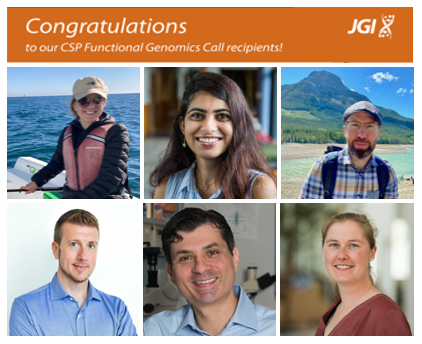
From left to right: Julia Baer, Aditi Bhat, Robert Campbell [above]; Andrew Gajigan, Betül Kaçar, McKenzie Kuhn, TaFrom left to right: Ali Boehm, Freddy Bunbury, Gina Chaput, Jessica Fletcher and Jonathan Fresnedo [above]; Pablo Iván Nikel, Ilya Finkelstein, Marie Sofie Møller [below]
Below find a list of the final six researchers accepted for 2022. Proposals are accepted year-round; the next deadline is July 31. You can also find more information about the scientists and their proposals here.
| Name | Affiliation | Proposal Title |
| Baer, Julia | University of California at Santa Cruz | The molecular evolution of bloom-forming toxic Pseudo-nitzschia in response to ocean warming |
| Bhat, Aditi | Brookhaven National Laboratory | Understanding the genotype-by-genotype basis of heavy metal tolerance in Medicago-rhizobia symbiotic interactions |
| Campbell, Robert | University of Tokyo (Japan) | Mining and exploiting histidine kinase sensor domains for construction of a massive catalog of green fluorescent protein-based biosensors for detection of biofuel, bioproduct, metal ion and metabolite targets |
| Finkelstein, Ilya | University of Texas at Austin | Beyond CRISPR: Functional metagenomic discovery of programmable anti-phage systems |
| Møller, Marie Sofie | Technical University of Denmark (Denmark) | High throughput screening of binding modules to improve the efficiency of enzymatic degradation of synthetic polymers and polysaccharides |
| Nikel, Pablo Iván | Novo Nordisk Foundation Center for Biosustainability (Denmark) | Paving the way towards new-to-nature fluorinated bioproducts |